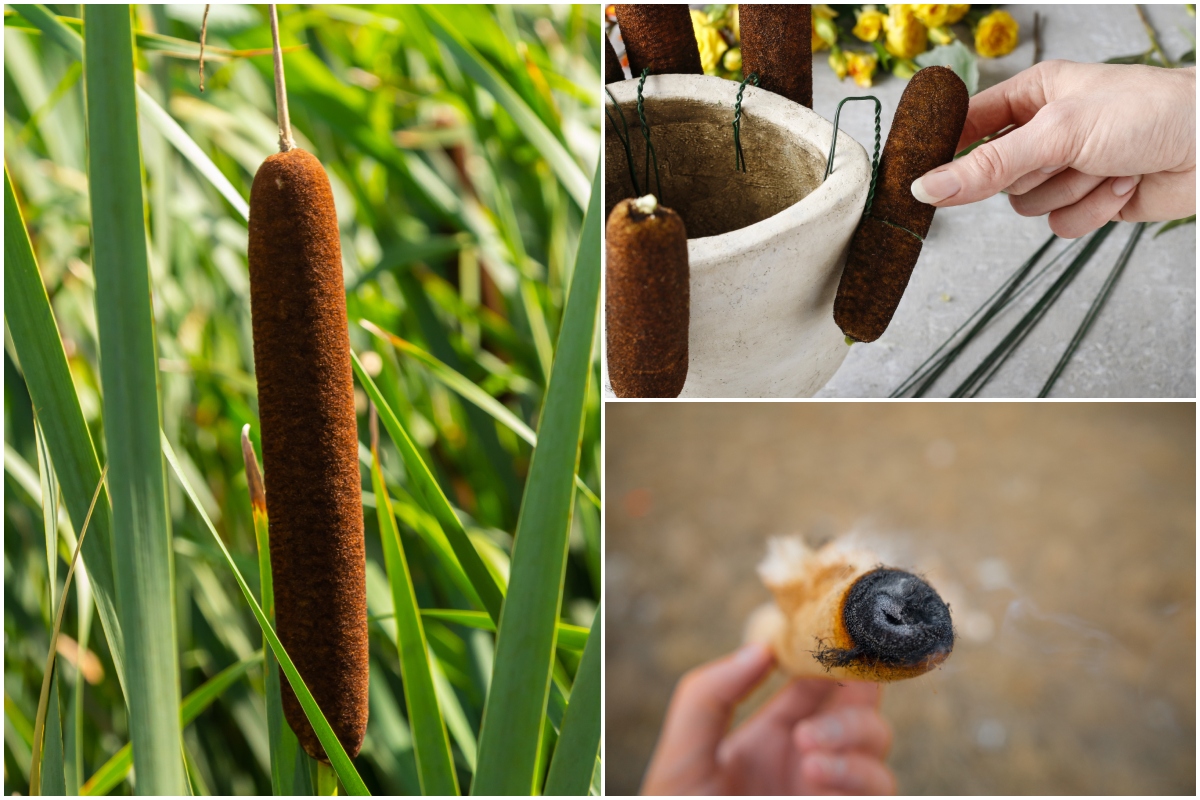
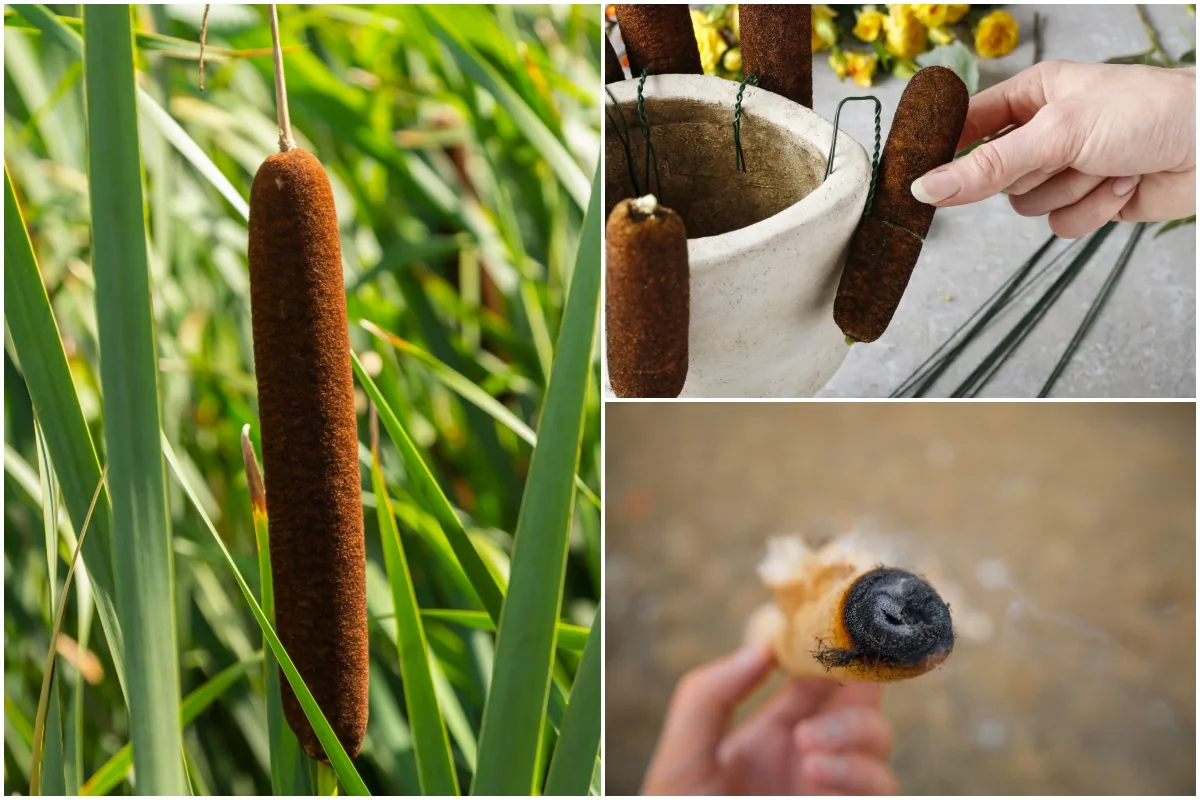
The place contemporary water meets land, the cattail stands tall, its cylindrical seedheads and upright sword-like leaves evenly swaying within the breeze. Cattails are so ubiquitous to water that it’s fairly unattainable to image a pond or river edge with out them.
Cattails is likely to be probably the most acquainted wetland denizens, however that doesn’t make them any much less outstanding. Greater than a pond function, cattails are year-round sources of meals, constructing supplies, crafting provides, and drugs.
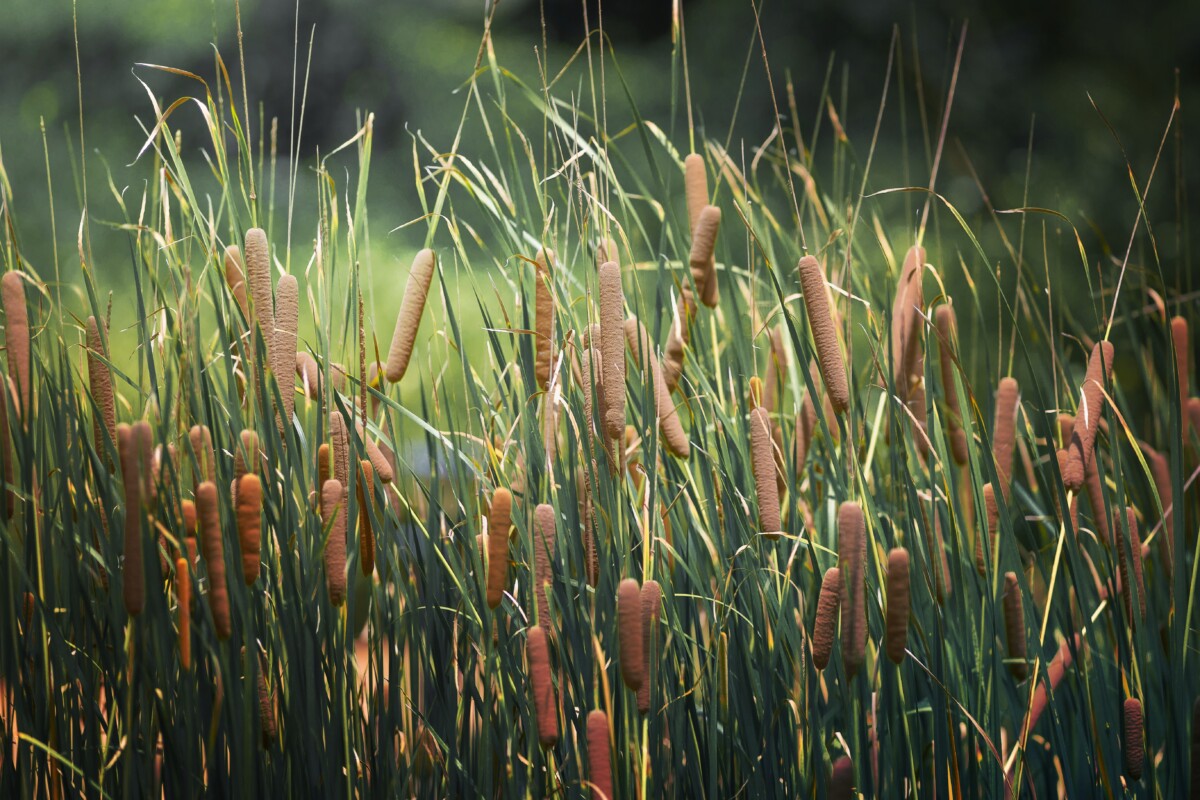
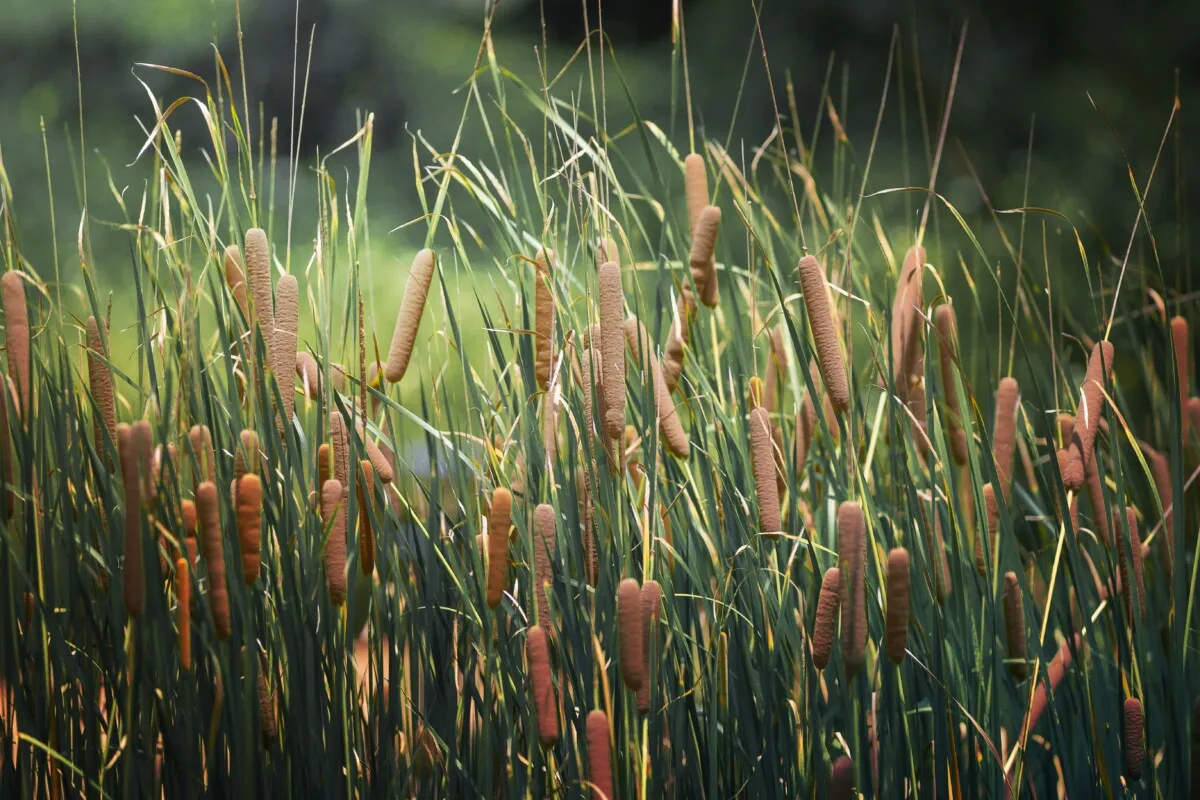
Wherever there may be shallow water, you’ll discover cattails rising.
Cattails – additionally referred to as reeds or bulrushes – are straightforward to identify because of their outstanding brown sausage-shaped flowerheads.
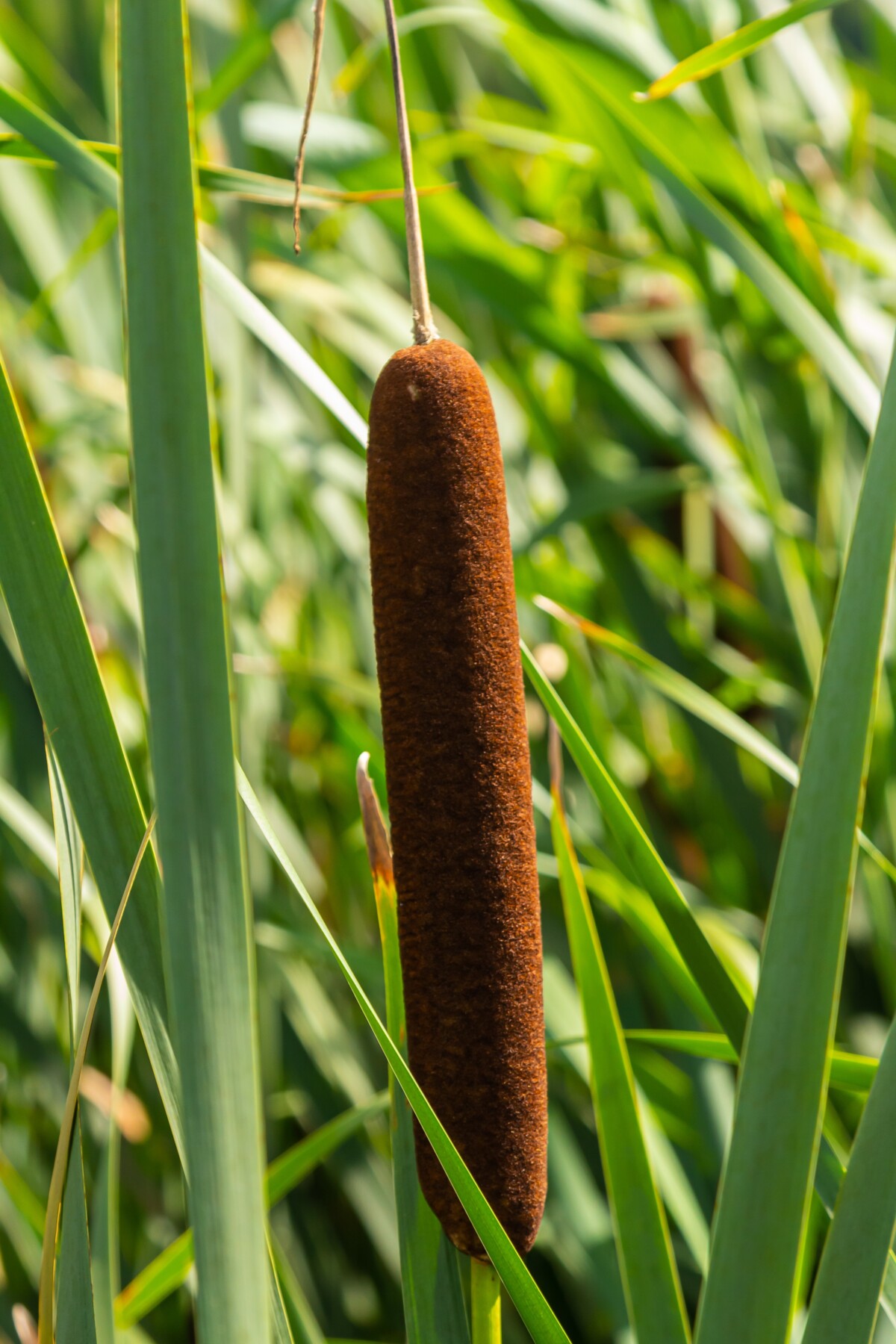
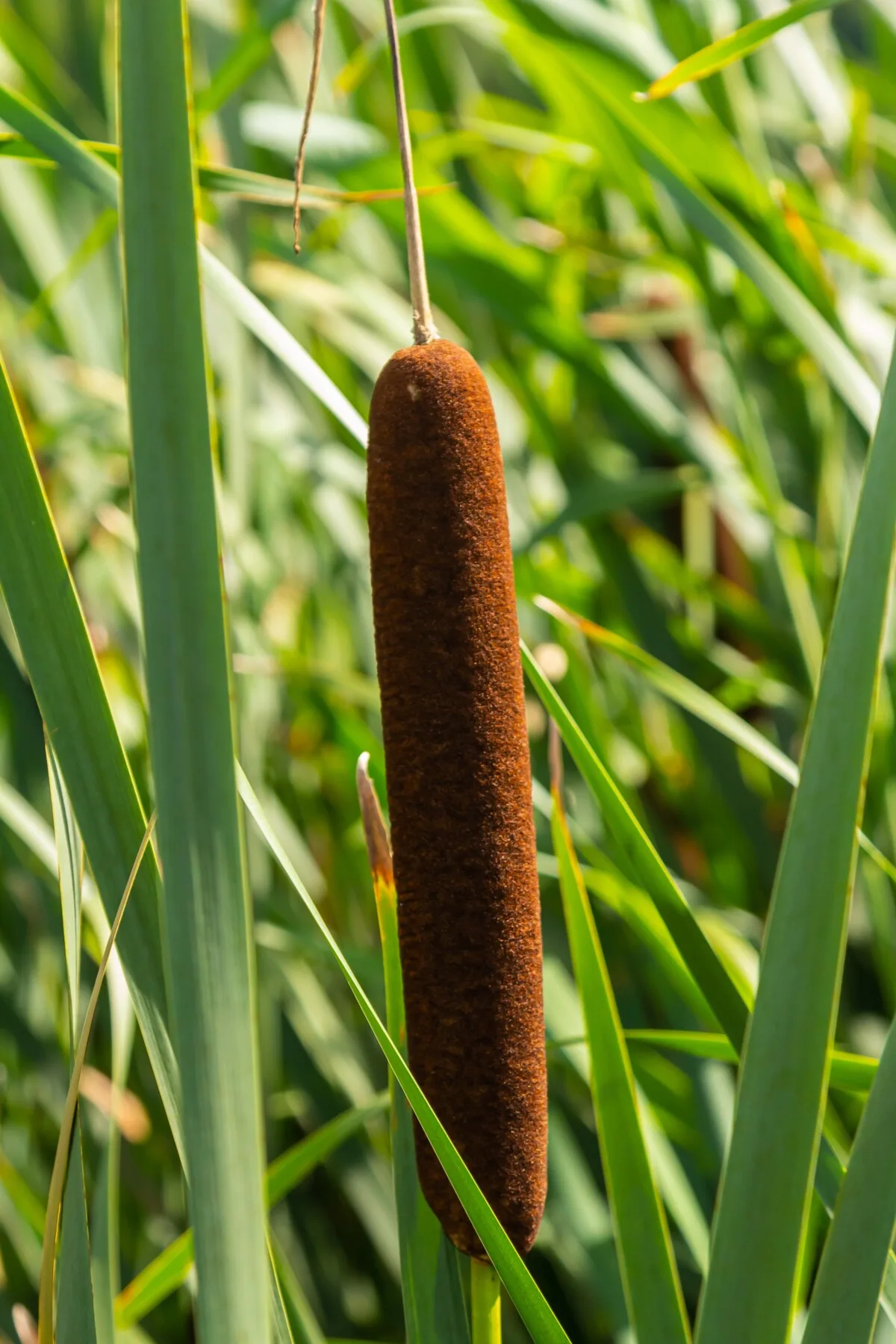
You’ll discover cattails in moist meadows, marshes and fens, in roadside ditches, alongside the margins of ponds and lakes, skirting river and stream backwaters, irrigation canals, and oxbow lakes. Usually, cattails develop in any contemporary or barely brackish our bodies of water the place the depth doesn’t exceed 2.6 toes.
These semi-aquatic perennials get pleasure from a spread of climates. Cattails flourish equally in tropical, subtropical, temperate, humid coastal, and dry continental environments, at elevations from sea degree to 9,600 toes.
Cattails are everywhere, and generally that’s an issue.
There are three species of cattail you’re apt to see padding our shorelines:
Broadleaf cattail (Typha latifolia) is a far-flung cosmopolitan species, native to North and South America, Eurasia, and Africa. Because the title suggests, it has bigger leaves that develop 0.75 to 1.5 inches extensive.
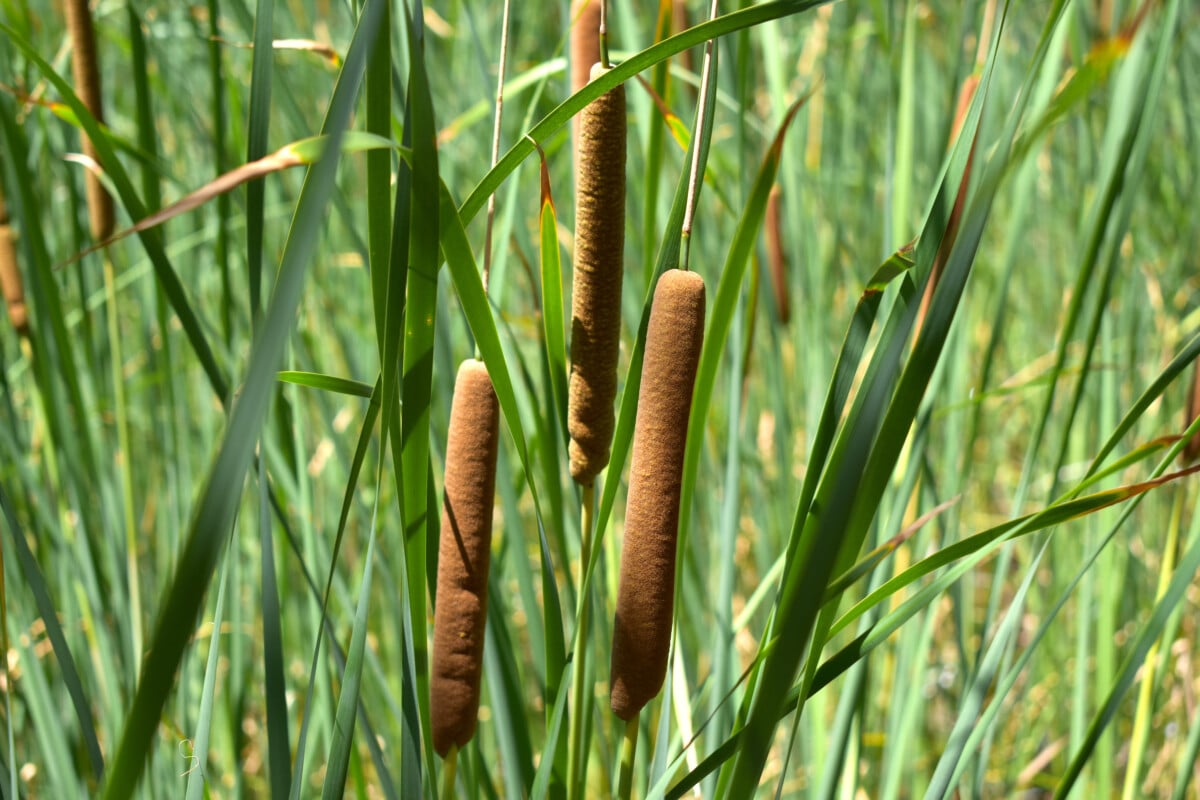
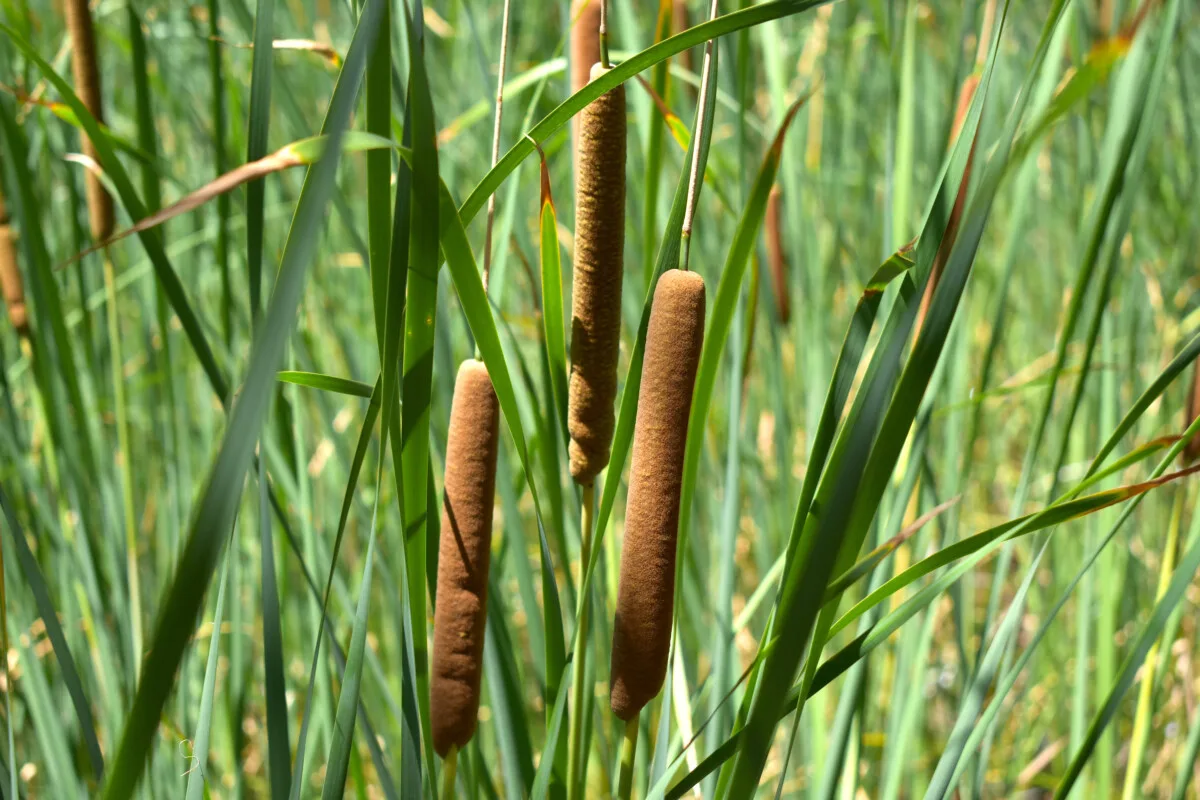
An important plant for wholesome riparian ecosystems, broadleaf cattails lives within the slender strip the place shallow water regularly transitions to dry land. It stabilizes the shoreline and prevents erosion, filters pollution from the water, and helps an unlimited variety of wetland species. Bugs, fish, reptiles, waterfowl, marsh birds, beavers, muskrats, elk, and deer depend on it for meals, shelter, nesting, brooding, and canopy.
Narrowleaf cattail (Typha angustifolia) is an launched species from Europe with a spread that overlaps broadleaf cattail. It seems practically an identical to native cattail, however could be recognized by its slimmer leaves that develop to solely 0.25 to 0.5 inch extensive.
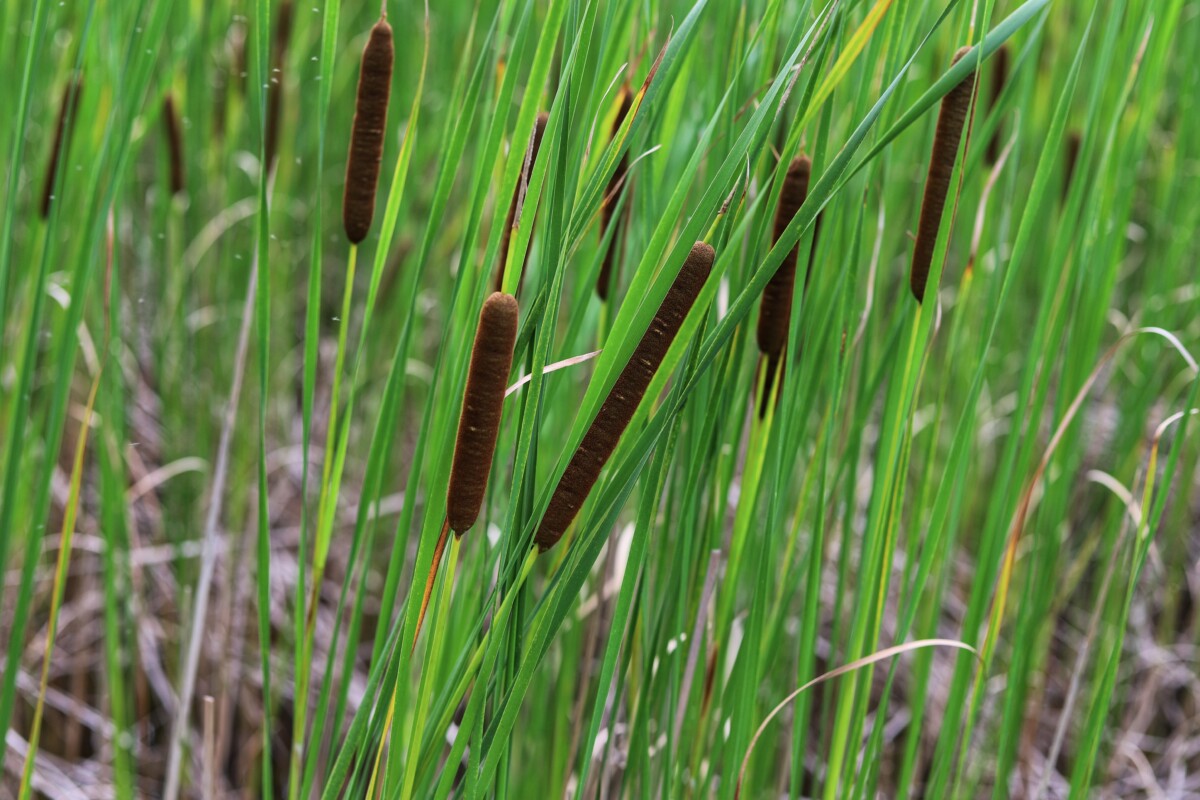
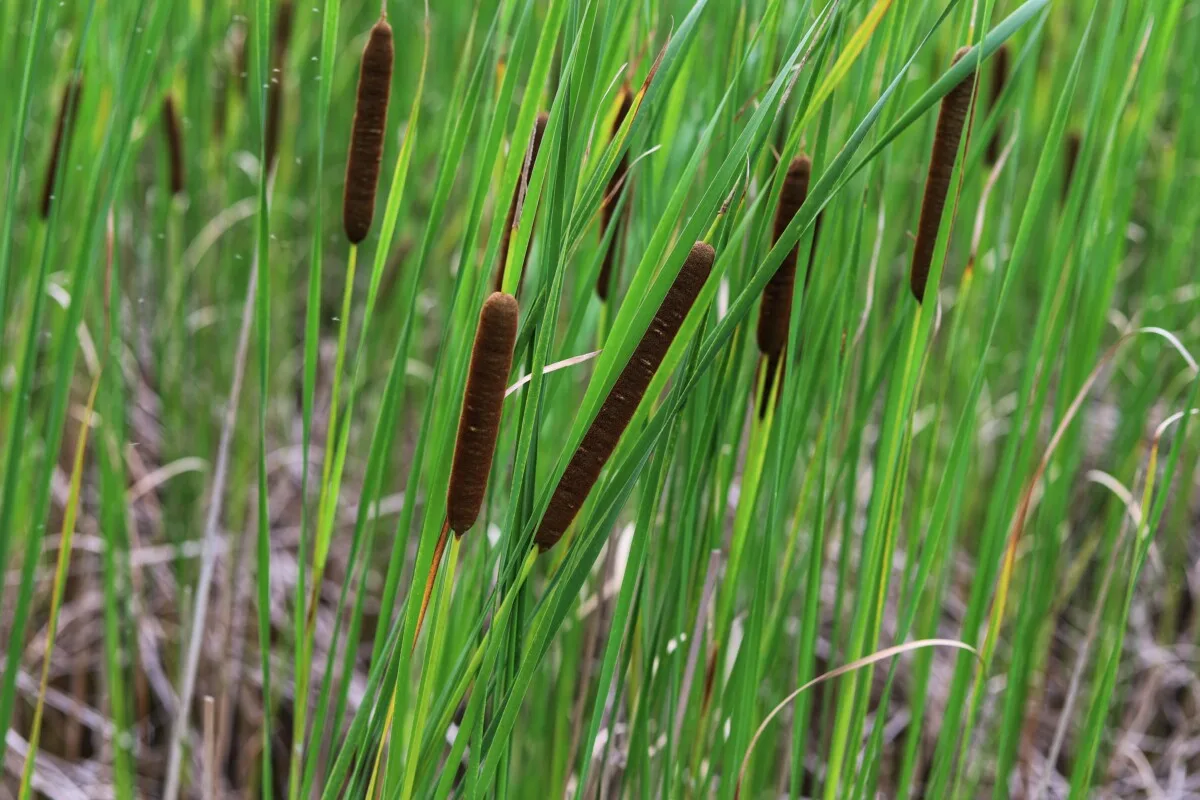
Rising aggressively alongside shores and in free-floating mats, narrowleaf cattail could be very invasive in our wetland environments. It kinds stands so dense that it crowds and outcompetes native vegetation, impacting meals sources and habitats for birds, butterflies, fish, and different wetland creatures. When narrowleaf and broadleaf cattails share a habitat, they cross-pollinate and create hybrid cattail.
Hybrid cattail (Typha x glauca), generally referred to as white cattail, is extraordinarily invasive and simply outcompetes each its dad and mom for house and assets. Though hybrid cattail seeds are sterile, it spreads aggressively by way of creeping rhizomes that make it very troublesome to eradicate as soon as established.
It’s not straightforward to tell apart hybrid cattail from its dad and mom, as it might inherit traits from both one. Some hybrid cattail may have slender leaves and others may have broad leaves. One notable function of invasive cattail species is the big and dense monocultures they type. Broadleaf cattail stands, by comparability, are usually smaller and looser, with neighboring vegetation reminiscent of cordgrasses, sedges, and milkweeds, rising in and round them.
As a result of cattails are so prolific, they’re straightforward to seek out and forage.
In search of wild cattails is a chance to discover your native water methods and wetlands, that are a few of the most stunning and vital ecosystems on Earth. When foraging, attempt to goal cattails with slender leaves and people in spreading, dense monocultures. It’s muddy work, so put on some rubber boots!
As you’ll quickly see, cattails are wonderful suppliers. There’s no a part of the cattail that doesn’t serve a operate of some type.
Culinary Cattail
The culinary makes use of of cattails are so broad that it was as soon as known as the “grocery store of swamps”.
For hundreds of years, Native People utilized cattails in each season – together with winter – as a nutritious supply of meals. Though your entire plant is edible, the cattail shoots, flowers, rhizomes, and pollen are the choicest bits.
On the floor, cattail could not look significantly appetizing however these vegetation are surprisingly protein-rich and filling. It’s not bland subsistence fare, both. When cattails are harvested on the proper time of yr, they’ve a delightfully distinctive taste profile.
When searching for out cattails, solely harvest vegetation from clear water sources. As bio-accumulators, cattails live water filters that soak up pollution and toxins into their roots and leaves. When accumulating cattails for meals, steer clear of those rising close to buildings, roads, and drainage ditches.
1. Cattail Shoots in Early Spring
From early spring to early summer time, cattail shoots are good for the consuming. For the very best texture and taste, harvest cattail shoots earlier than start to flower.
The younger and tender interior core, stripped of the outer leaves, could be eaten uncooked in salads or sautéed with different veggies. The peeled shoots are white and style like a cross between cucumber and inexperienced beans. Nutritionally, cattail shoots are supply of protein, fiber, calcium, potassium, magnesium, and vitamin A.
Eat them whereas they’re contemporary, or pickle your cattail shoots to get pleasure from later.
2. Immature Cattail Flowers in Late Spring
Beginning in late spring, the cattail flower stalks emerge from the cluster of leaves. As monoecious vegetation, every floral spike has distinct female and male flowers that turn into dense racemes.
Separated by a small hole, the higher portion is the male half that can ultimately shed pollen; the decrease cylinder includes the tightly-packed feminine flowers that can grow to be a darkish brown, cigar-shaped flowerhead as soon as it’s pollinated.
Biting right into a mature cattail flower will go away you with a mouthful of seeds and fluff – so don’t do this. Lengthy earlier than pollination, each female and male cattail flowers could be boiled, steamed, or fried and eaten like corn on the cob.
Timing the cattail flower harvest is essential. Decide the flowerheads when they’re nonetheless inexperienced and lined of their protecting sheaths to get pleasure from essentially the most tender cat-cobs.
3. Cattail Pollen in Early to Mid-Summer time
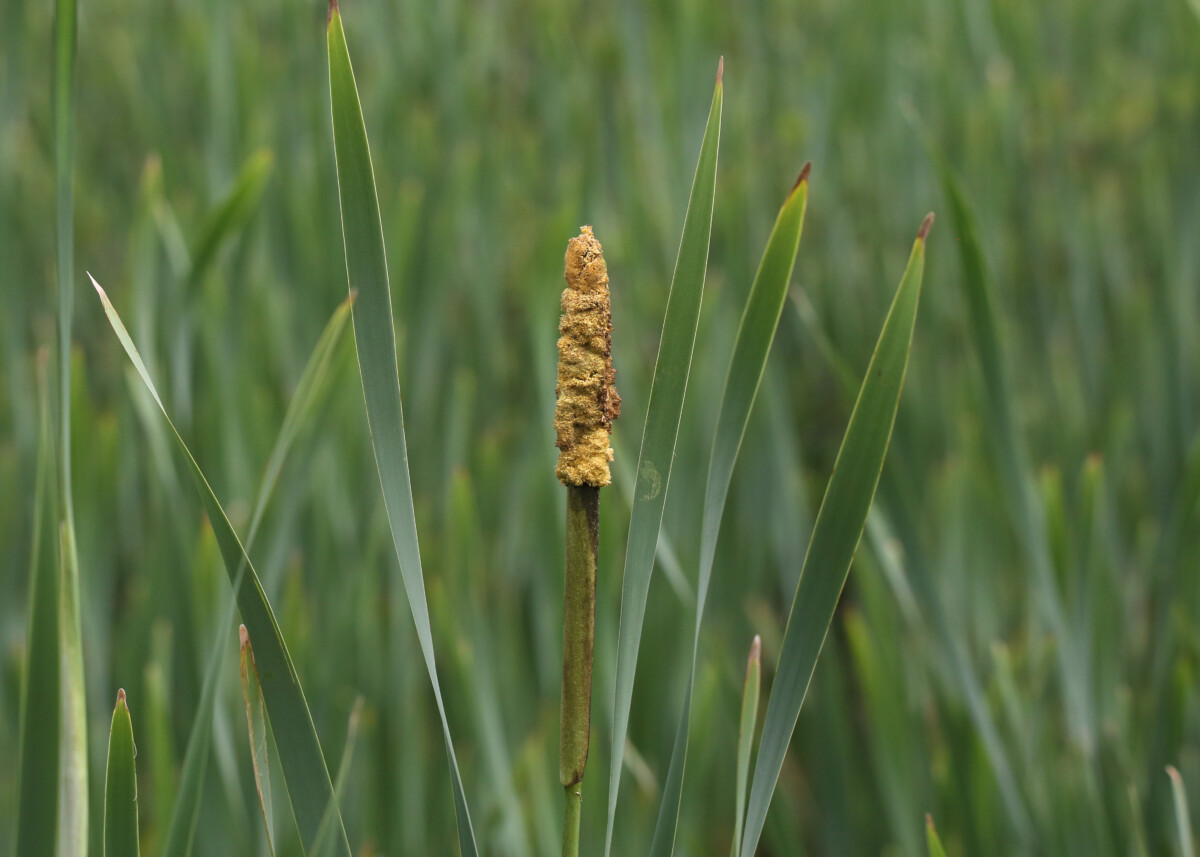
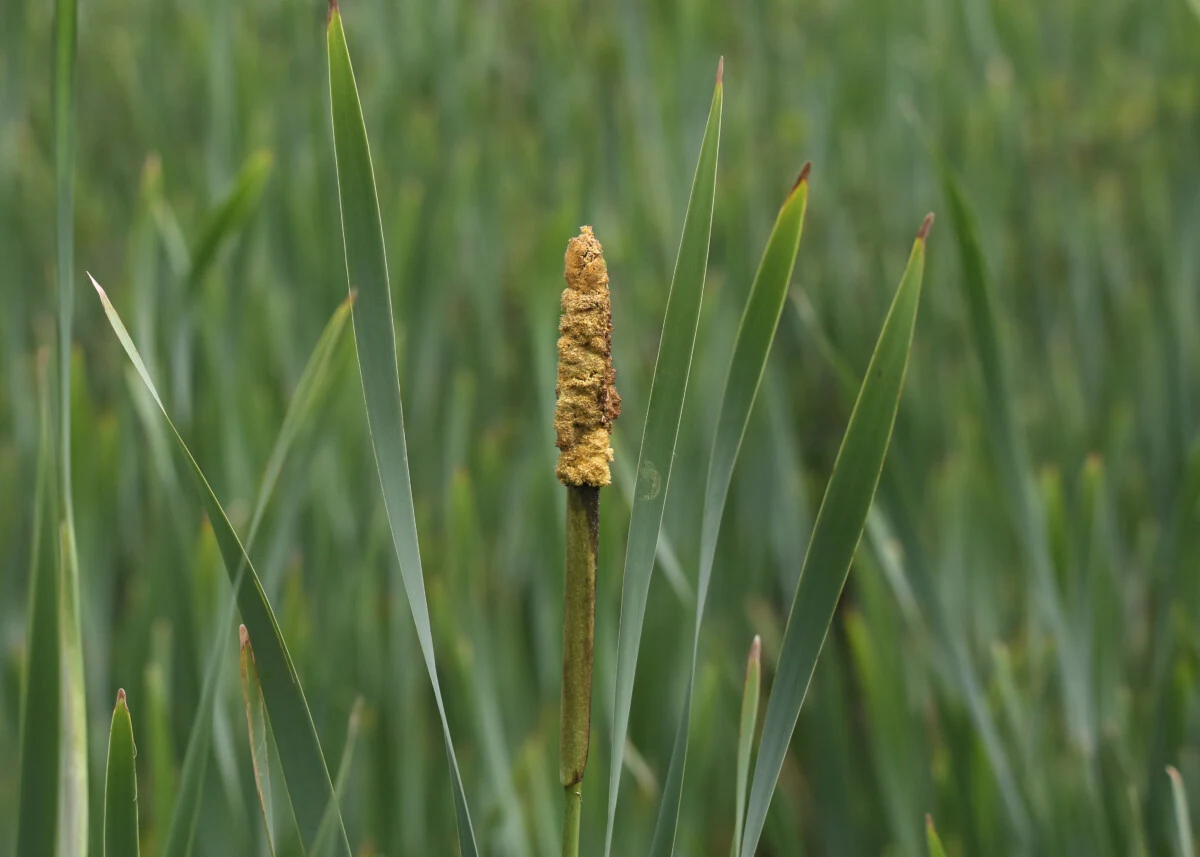
Because the cattail inflorescence continues to develop and swell in dimension, the higher male cylinder will turn into hundreds of particular person florets, every with a pair of bushy stamens. It provides the highest of the spike a fuzzy-looking texture. In distinction with the still-green feminine flowerhead beneath, the male flowers flip a golden yellow shade because the tiny florets shed pollen.
Cattail flowerheads are relatively beneficiant with pollen, and every one produces a whole lot of it:
The window for harvesting cattail pollen is barely a few week – normally towards the tip of June. Accumulate cattail pollen by tapping the flower spike right into a paper bag. Sift out the chaff with a fine-mesh strainer and switch the pollen right into a glass jar.
Cattail pollen has a nutty and barely candy taste that goes beautifully in baked items. Attempt changing half the flour with cattail pollen in your favourite bread, cookie, muffin, or pancake recipe.
4. Cattail Roots from Fall by way of Winter
Submerged within the mud beneath the water’s floor are the cattail roots. These are thick and fibrous rhizomes that develop horizontally underground, storing vitamins and giving rise to new shoots in spring.
Cattail rhizomes could be harvested at any time of yr however have the very best taste in autumn and winter, after vegetation have flowered and gone to seed.
To seek out the rhizome, comply with the primary stem down and really feel round within the mud for roots which might be 1 to 1.5 inches round. Loosen the soil across the rhizome and pull it up. Peel away the outer pores and skin and fibers till you attain the white interior core.
Cattails belong to the order Poales within the plant kingdom, a household of grasses that embody vital dietary staples reminiscent of wheat, corn, rice, and barley. Like these meals, cattail rhizomes are loaded with starchy carbohydrates and are an energy-rich gas. They’ve a mildly candy, starchy taste that’s likened to potatoes. Though they are often eaten uncooked, the rhizomes are higher served boiled, baked, or grilled till tender.
The roots are additionally used to make flour and dough for baking. Pound and break up the white fibers, then soak them in water. When the starch has settled on the backside of the pot, fastidiously pour out the water. You should utilize it when it has the consistency of dough or let it dry fully for flour.
Not like wheat flours, cattail flour is gluten-free and received’t rise. Make flatbreads, or mix it half-and-half with different flours for baking. Cattail flour can be used like cornstarch to thicken up stews and gravies.
Cattail for Constructing and Crafting
Dwelling off the land is a bit simpler when there’s cattail round. Past meals, cattails are superb suppliers that may assist fulfill our most simple wants. Wherever you discover cattails rising, you’ll additionally discover water and the supplies for constructing fireplace, making shelter, and first help. This information is useful across the campsite and when honing your bushcraft abilities. It might additionally very properly save your life for those who ever end up off-trail within the wilderness.
Cattail being so ample makes them a simple supply of pure (and free) constructing and crafting provides as properly. Each a part of cattail is beneficial – it’s not simply the grocery store, it’s the ironmongery shop, pharmacy, and craft store of the swamps.
5. Fireplace Starter
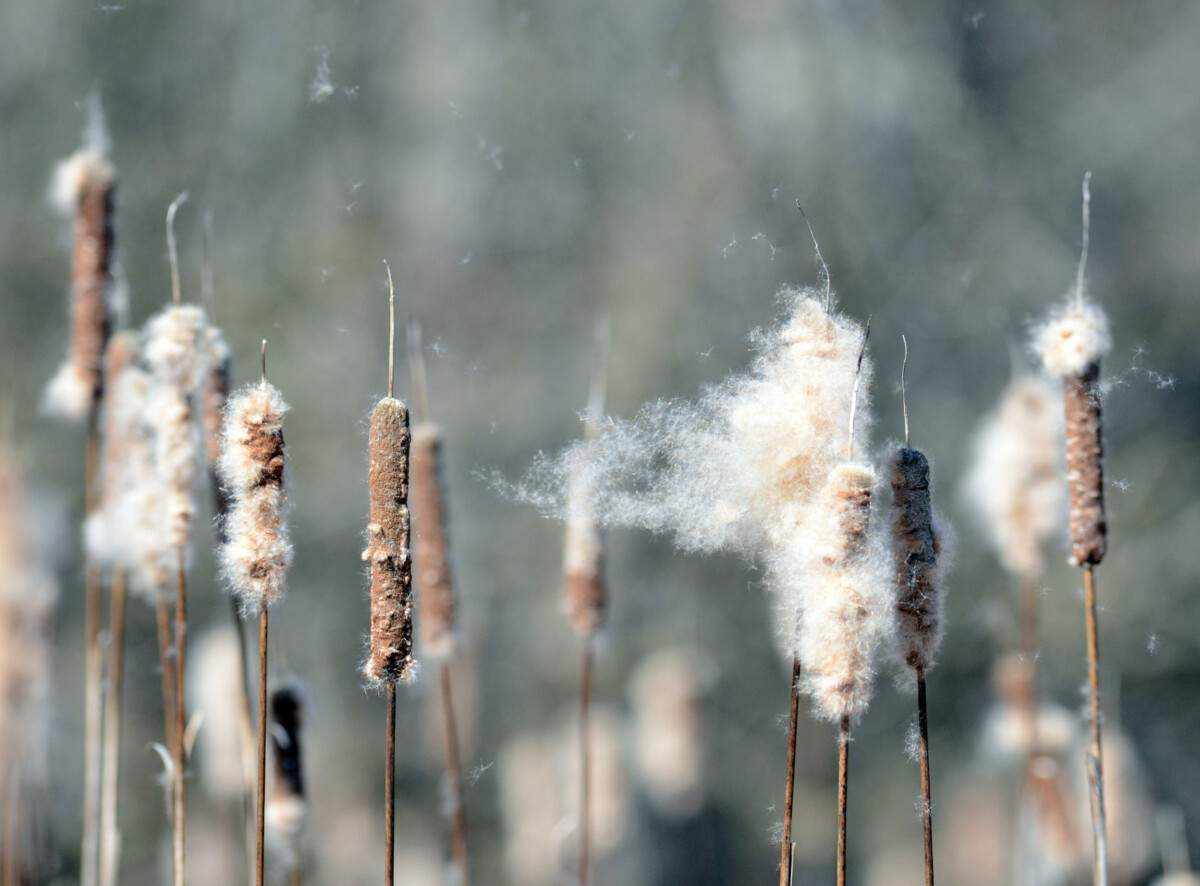
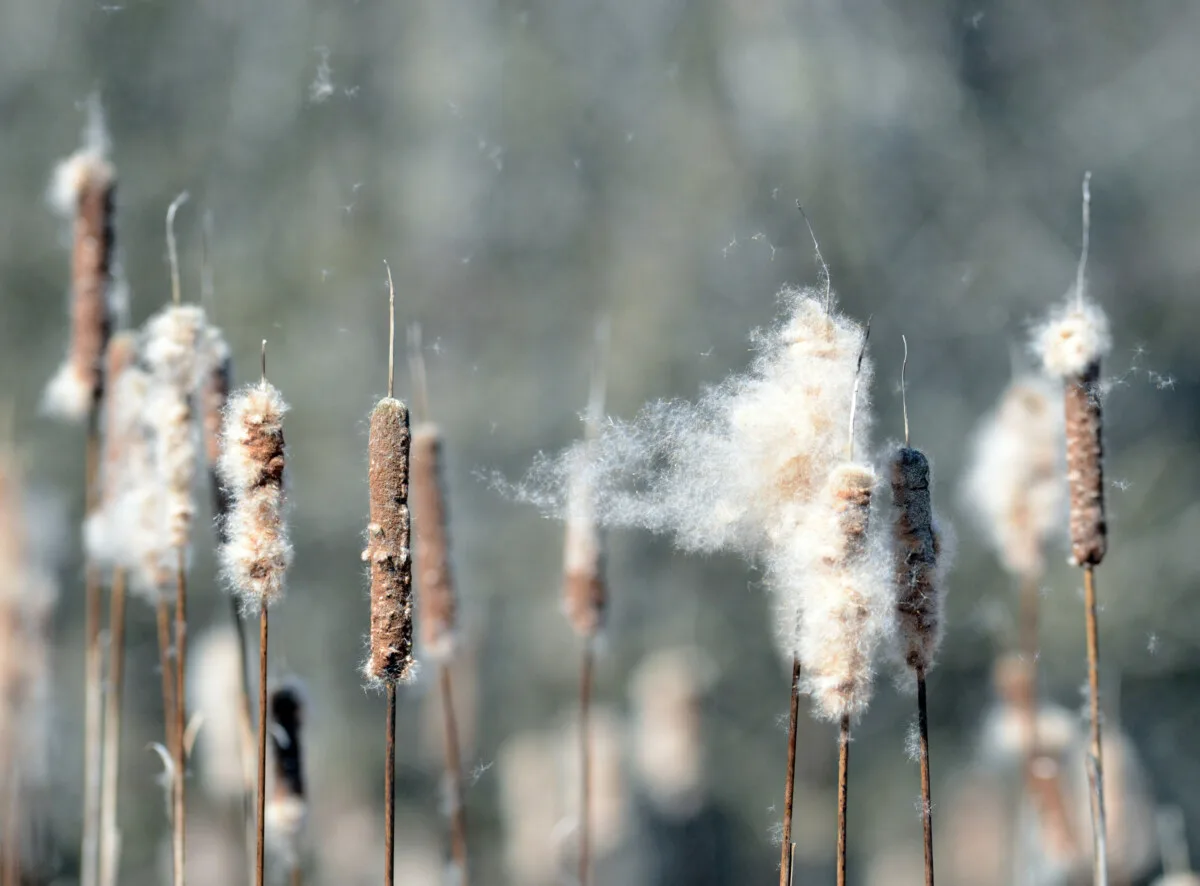
Break aside a mature brown cattail seedhead and inside you’ll discover a mushy and downy materials. The outer brown casing protects the fluff from moisture, protecting it good and dry, even in heavy rain.
When loosened from its shell and pulled aside, cattail down is delicate and ethereal stuff. It’s the right fire-starting materials because it catches gentle rapidly:
As an alternative choice to dry grass, wooden shavings, newspaper, or dryer lint, cattail fluff is nice tinder that burns quick and vivid. Earlier than your subsequent fireplace, whether or not on the fireplace or campsite, collect up some mature seedheads and retailer them alongside your firewood.
6. Tiki Torches
In a pinch, cattails flowerheads stored on the stalk could be lit and used like a torch to gentle the best way at night time.
For an extended lasting torch, first dip the cattails in oil or fats earlier than setting them aflame. The oil will sluggish the burning course of for vivid, usable gentle that lasts for a number of hours or extra.
7. Mosquito Repellent
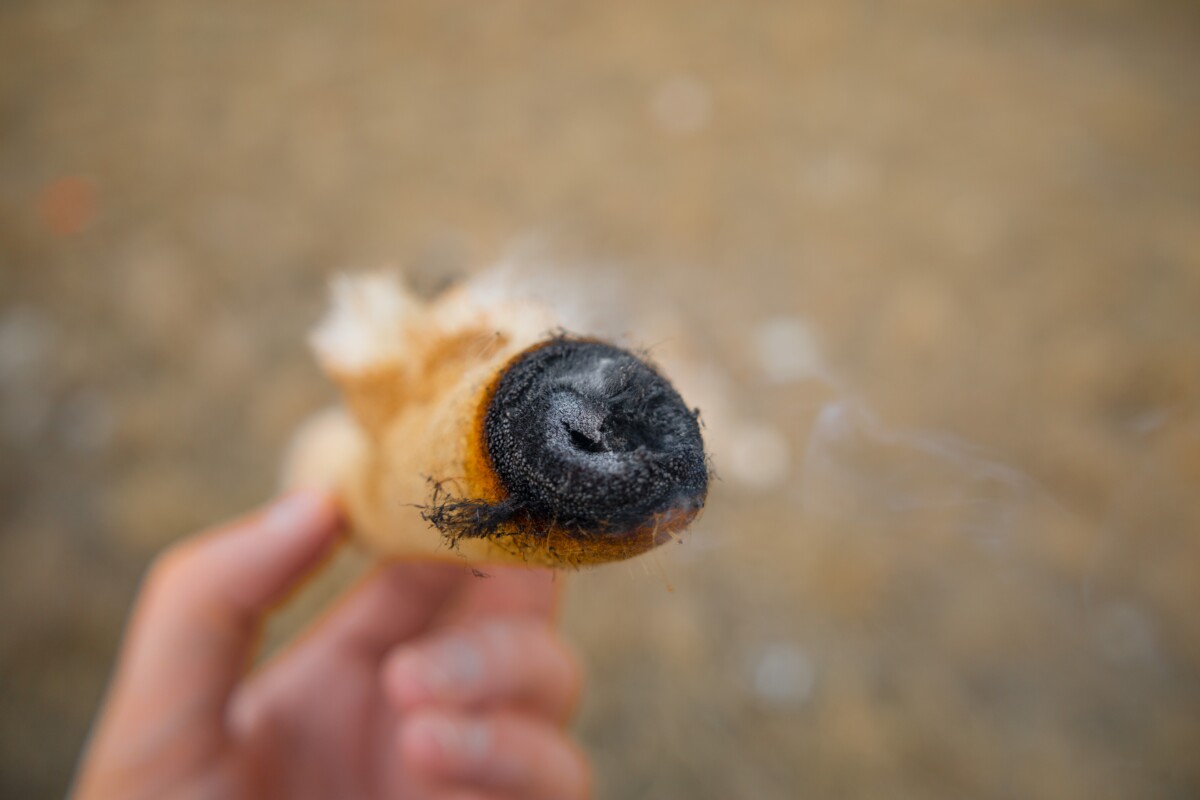
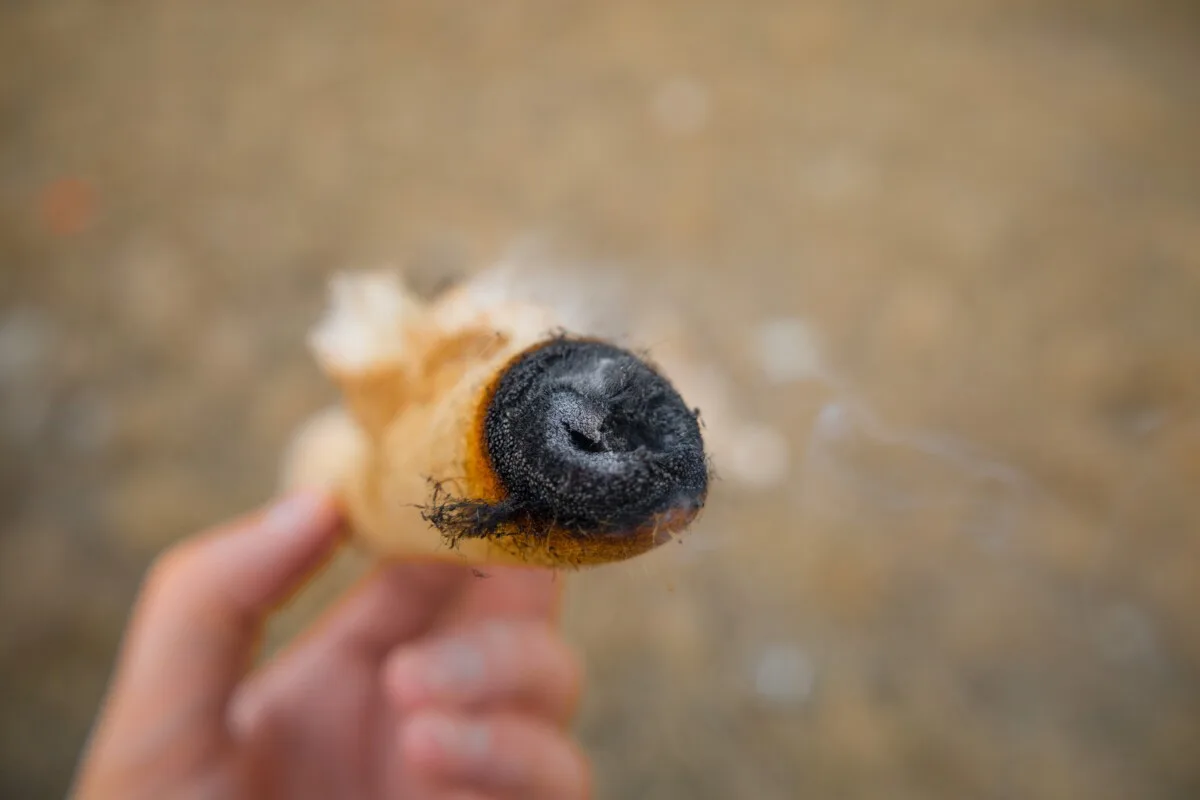
Smoking cattail flowerheads to maintain flying pests away is a convention that dates again a whole lot of years, a minimum of. The Lenape folks used cattails for virtually all the things and confirmed this trick to the European settlers. In newer occasions, “burning punks” was a factor folks did as much as the 90s to maintain bugs at bay.
To repel mosquitoes and bugs with the fragrant smoke of cattails, accumulate up a bunch allow them to dry out for a number of days. As soon as brittle, stick the spikes within the floor and lightweight up the tops. Blow out the flame and let it smoke and smolder, similar to incense.
8. Cordage
Cattail vegetation can attain nice heights at maturity, with leaves so long as 6 to 10 toes. These could be dried and twisted into sturdy cordage like twine and twine.
To collect cattail leaves, slice vegetation away on the base of the stem. The foliage grows vertically in an alternating spiral, and the leaves are eliminated by peeling them off from the primary shoot.
To vogue a fast rope, accumulate the dry and brown outer leaves and twist them collectively:
For a stronger twine, the whitish periphery of every leaf is peeled away and dried. Utilizing the thigh rolling approach, the leaf strands are then spun right into a finer twine:
Cattail cordage could be made into any thickness by braiding or twisting collectively three or extra lengths of twine.
9. Emergency Shelter
In a survival state of affairs, constructing a weatherproof shelter is the very very first thing to do. Should you occur to be close to a stand of cattails, they can be utilized to insulate any lean-to or free-standing construction you construct.
To make a dome shelter, accumulate lengthy and versatile wooden, about an inch thick. Pushed into the bottom in a circle, the tops of the branches are tied collectively to create the essential body. Extra sticks are then woven into the construction, wattle-style, to strengthen the partitions.
Cattail vegetation, lower on the base of the primary stem, are collected in bunches and lined alongside the partitions and high. Laid throughout like thatch, two layers or extra will present safety towards wind, rain, and snow.
10. First Support
When nature is your apothecary, you’ll be glad to see cattails on the horizon! Like so many medicinal vegetation, cattails haven’t undergone the pains of medical examine. Nevertheless, the plant has a protracted historical past of use by indigenous folks throughout the continent for aches, pains, and minor illnesses. If that doesn’t communicate to its efficacy, it does present a protected observe report.
Cattails are like a primary first help equipment within the wild:
- The fluffy fibers of the seedhead are mushy and absorbent. Use them to staunch bleeding and costume wounds. Like a band-aid, the cattail down will wick up moisture whereas permitting cuts, burns, and different accidents to breathe, protecting wounds clear and selling general therapeutic.
- The cattail roots can be utilized to assuage bug bites, blisters, sunburns, and different pores and skin irritations. Dig up the rhizome and mash it as much as create a starchy salve.
- Cattail gel has a cooling and numbing impact on the pores and skin and is used for fast ache reduction. The clear sap is positioned towards the bottom of the stem, in between every leaf layer. Apply it to the go or preserve it in a jar.
11. Stuffing Materials
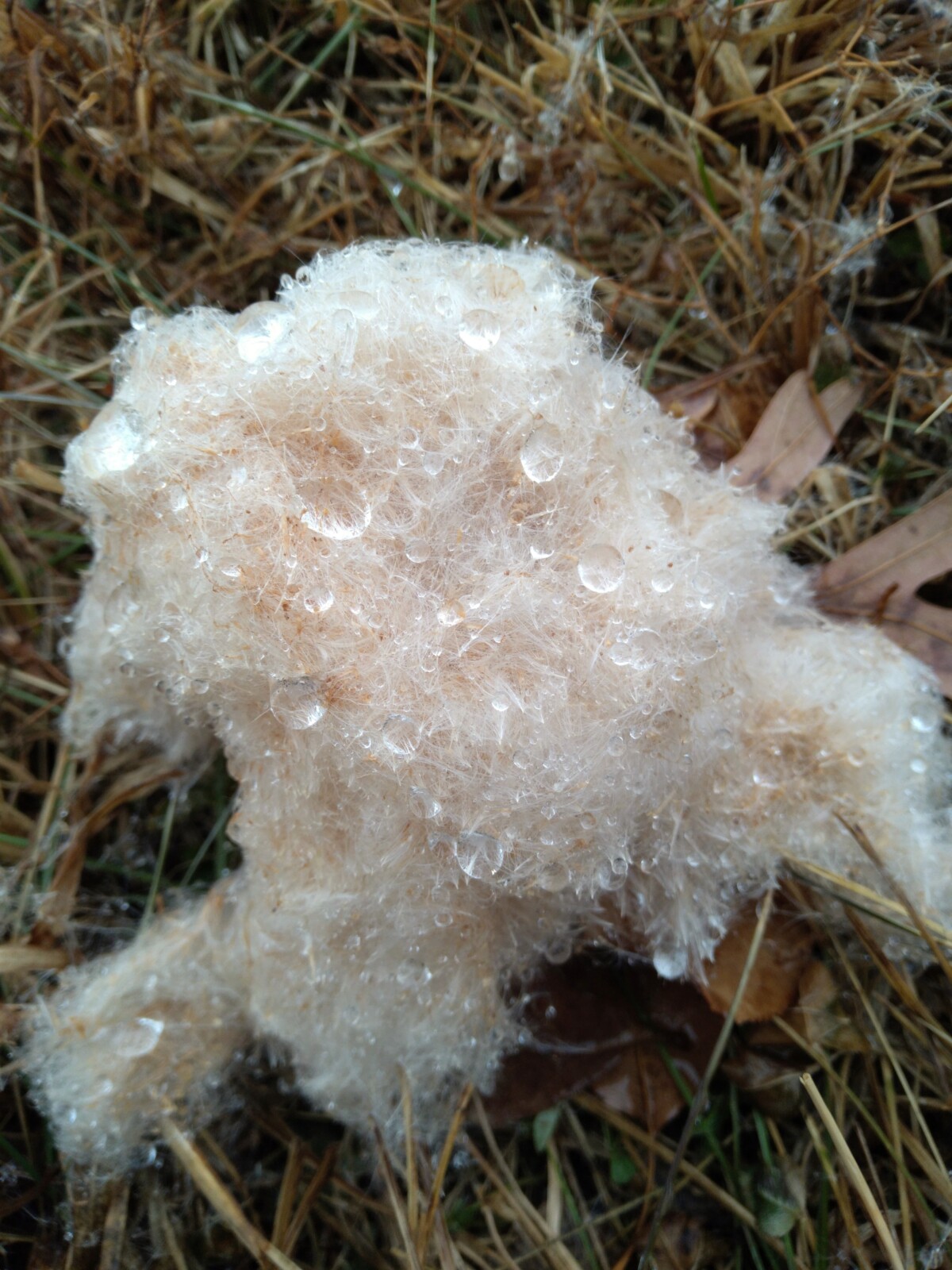
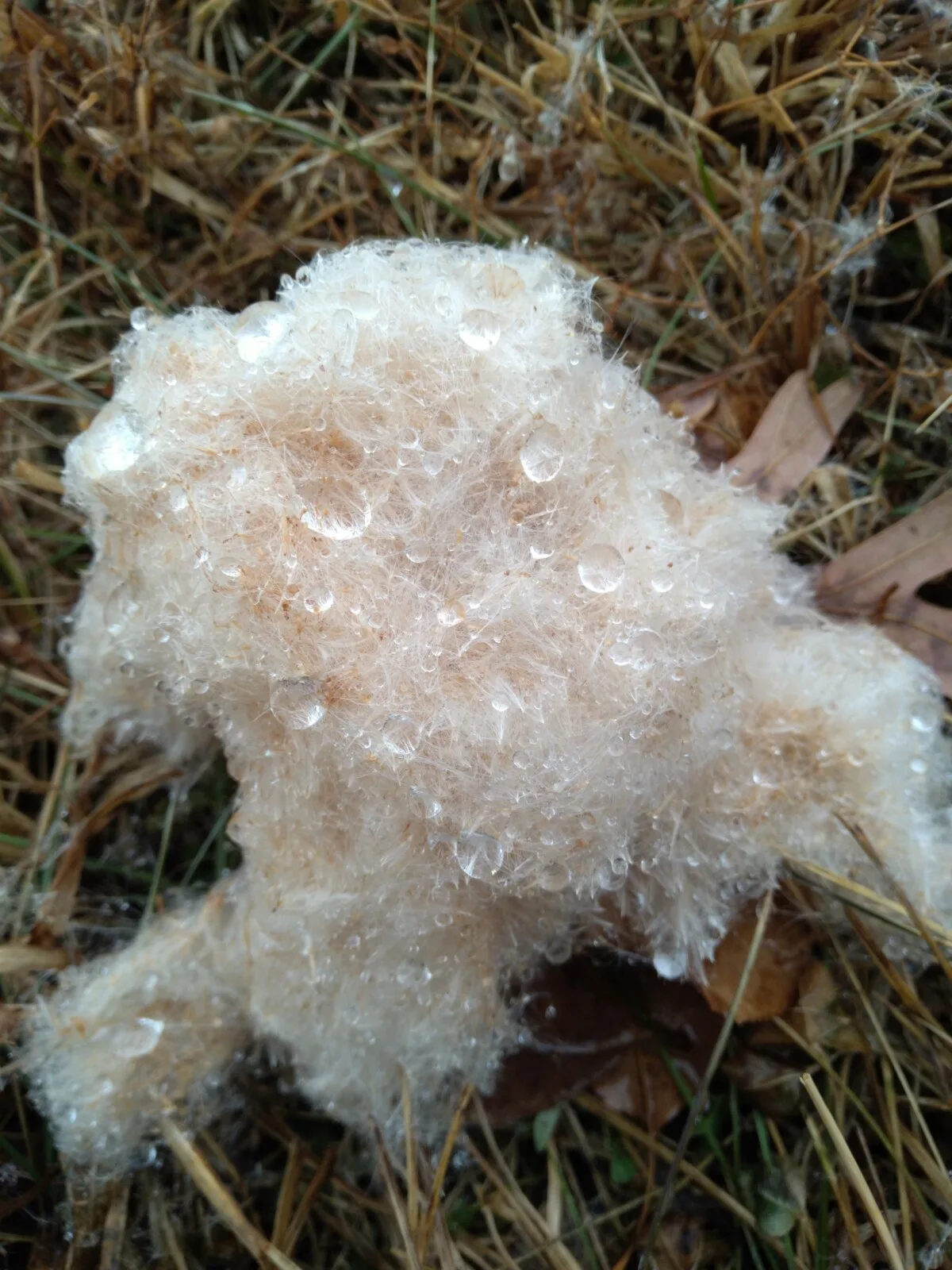
Cattail flowers are so unbelievably dense and tightly filled with fluff. Merely placing stress on the casing causes them to spiral out in a majorly fluffy cascade:
As you possibly can see, you’ll get a lot downy goodness from one cattail. The fluff is nice as stuffing for pillows, quilts, and mattresses. Or wherever else you’d like just a little further padding.
As we all know, cattail down is flammable, however much less so when it’s packed considerably snugly. When utilizing it as stuffing for bedding or clothes, pair it with a naturally fire-resistant outer cloth reminiscent of wool, hemp, leather-based, polyester, or nylon.
12. Down Insulation
Cattail fluff isn’t solely mushy and opulent, it’s a pure insulator. The tiny white fibers entice air within the areas between them, making a thermal barrier towards the chilly.
A vegan, cruelty-free various to duck and goose down, cattail fluff is a sustainable and ample materials that’s free for the taking. It may be used as a downy filling for jackets, vests, duvets, and sleeping baggage. The fluffy plant fibers are breathable, moisture-resistant, light-weight, and washable.
Cattail fluff may also be pressed into felt lining for mittens, slippers, and winter boots. That is achieved by spreading the fluff evenly on a flat floor and urgent it right into a fabric-like materials with a rolling pin.
13. Cattail Weaving
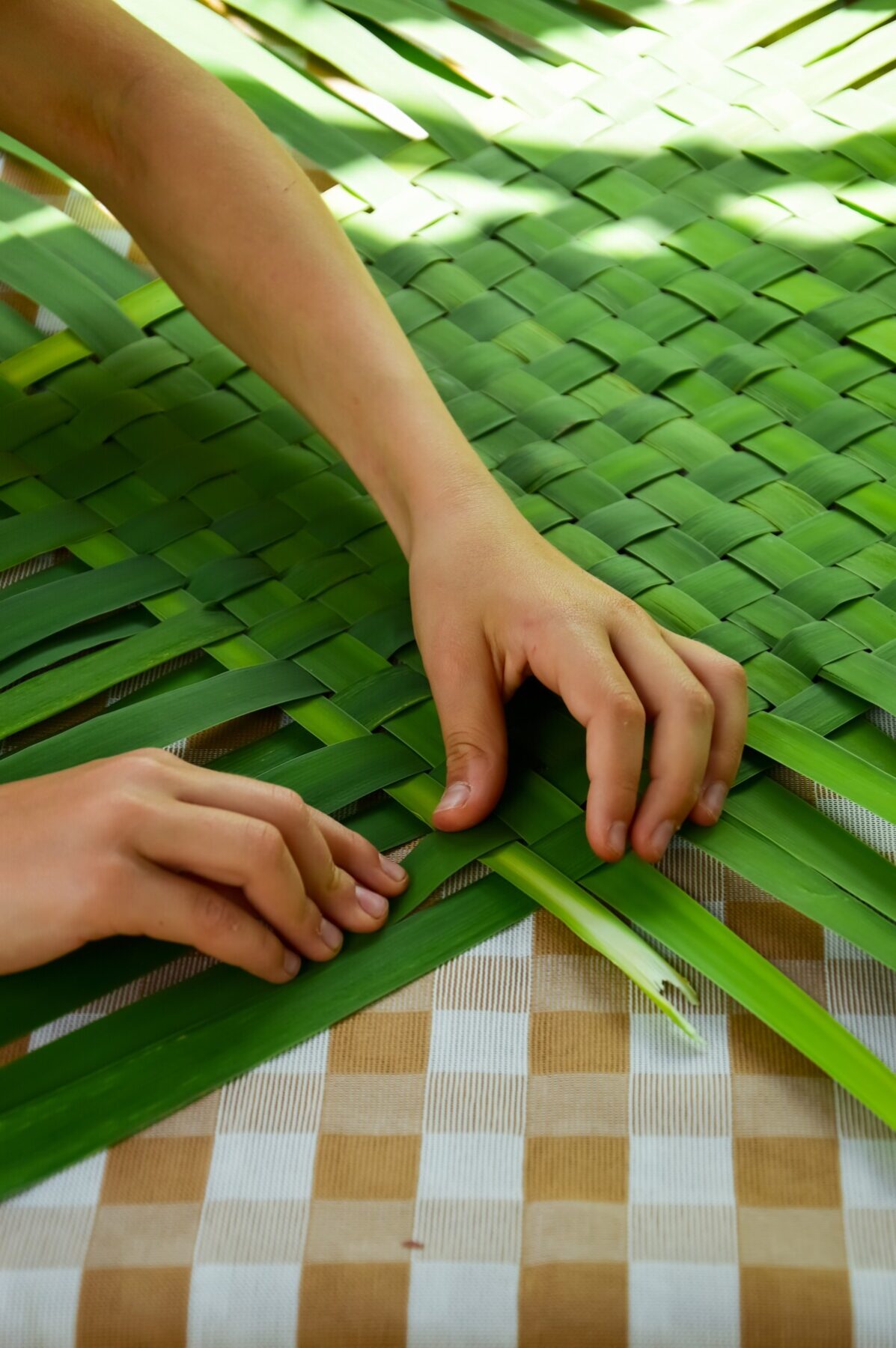
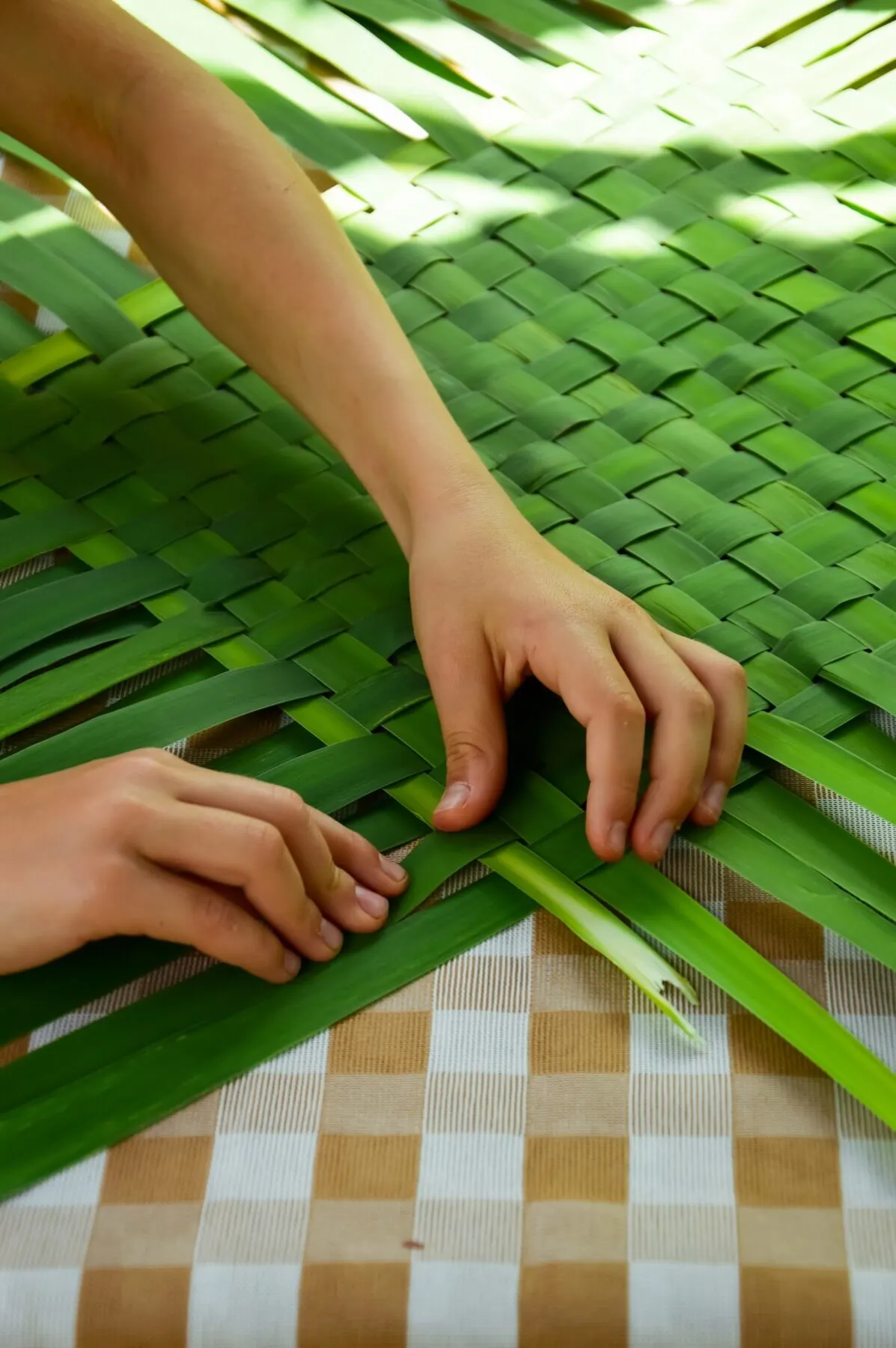
Cattails and different reedy marsh vegetation are among the many oldest weaving supplies, relationship way back to historical Egypt. Lengthy, flat, stiff, and pointy-tipped, the leaves of cattail could be crafted into all types of ornamental and sensible objects. Fading to a heat tan shade when dry, cattail weaving produces items which might be each sturdy and enticing.
Harvest cattail leaves for weaving by snipping vegetation on the stem and letting them dry in a pile for a few week. Once you’re able to get weaving, moisten them barely by wrapping the bundle in a humid towel. Re-wetting the leaves ensures they’ll be pliable and received’t snap in two when bent. Utilizing leaves whereas they’re nonetheless contemporary and inexperienced is ok too, however there’s a danger they are going to shrink as they dry, and go away gaps in your completed work.
Right here’s how you can make a wicker cattail basket:
Rugs and mats could be woven simply with the over-under-over approach:
You possibly can even make a solar hat:
Historically, cattail leaves had been woven to make fish traps, snow footwear, rush seat covers, baggage and satchels, and river-worthy boats.
14. Cattail Flower Preparations
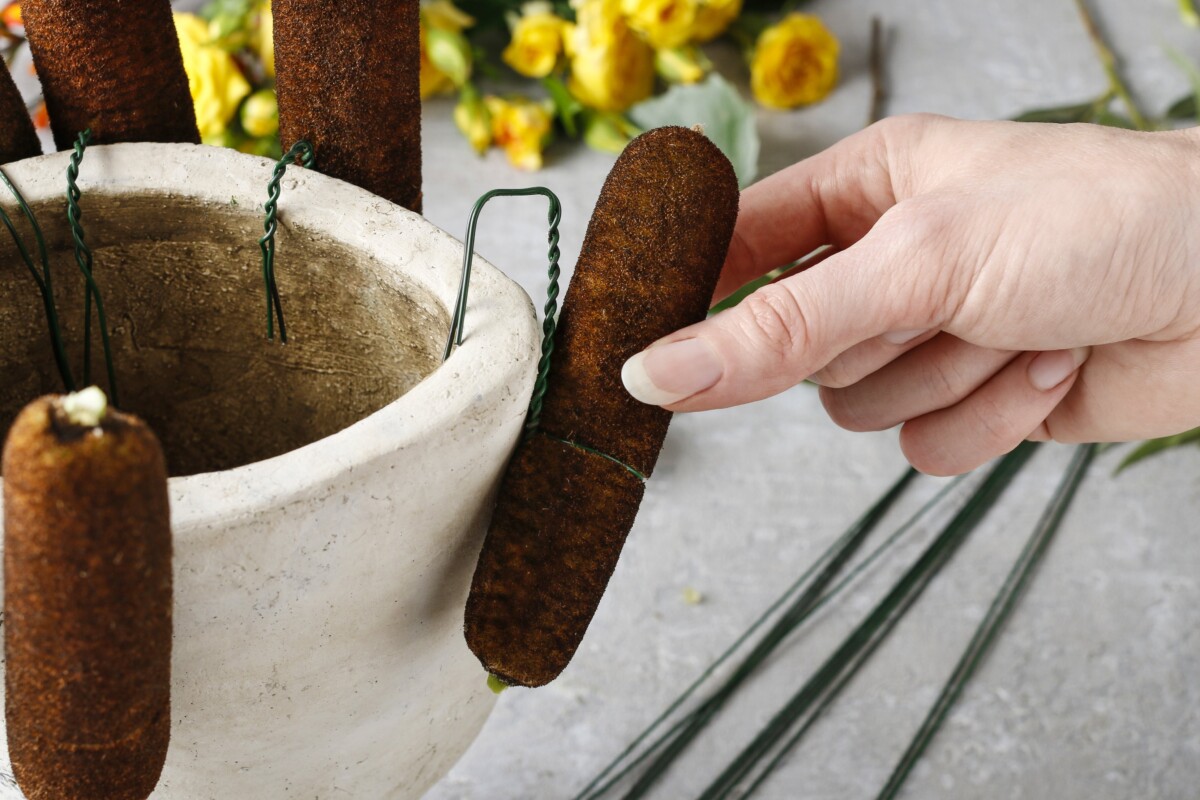
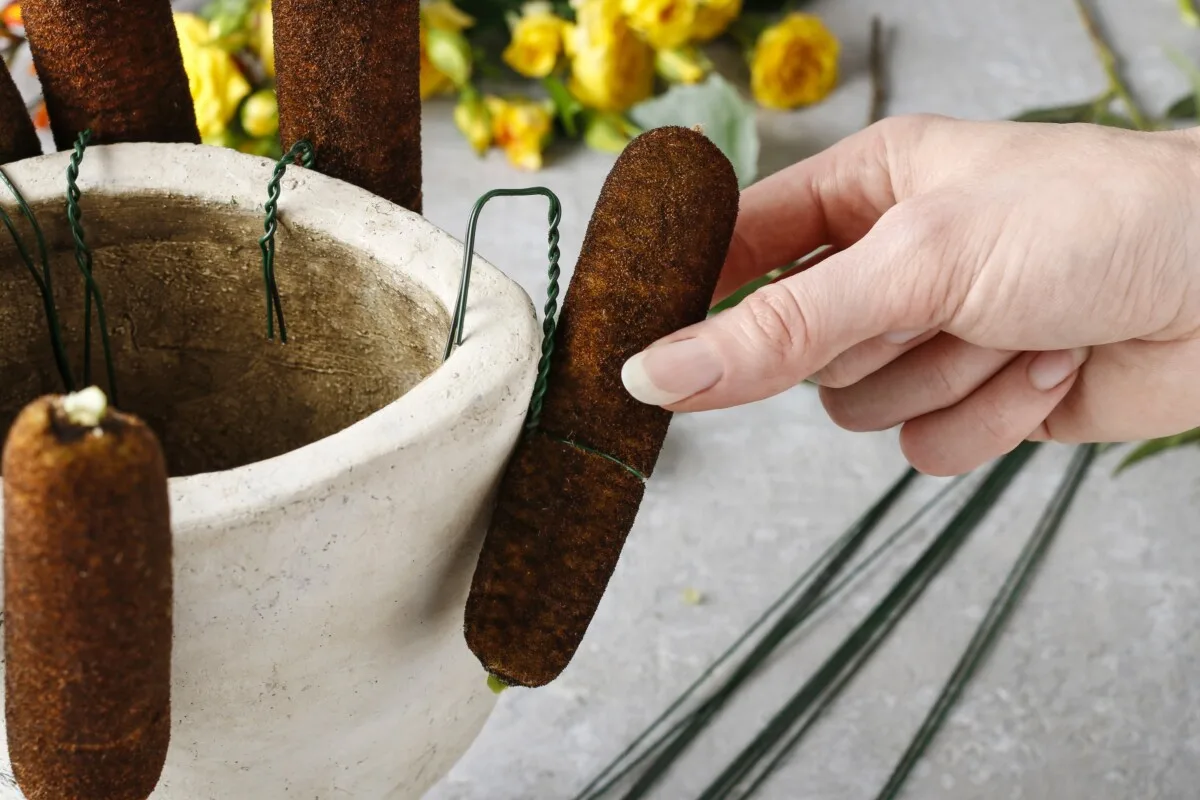
Say what you’ll about cattail’s velvety corndogs, no different flower produces blooms in fairly the identical approach! This superb plant and its uncommon flowerheads can grow to be the centerpiece in your subsequent autumn flower association.
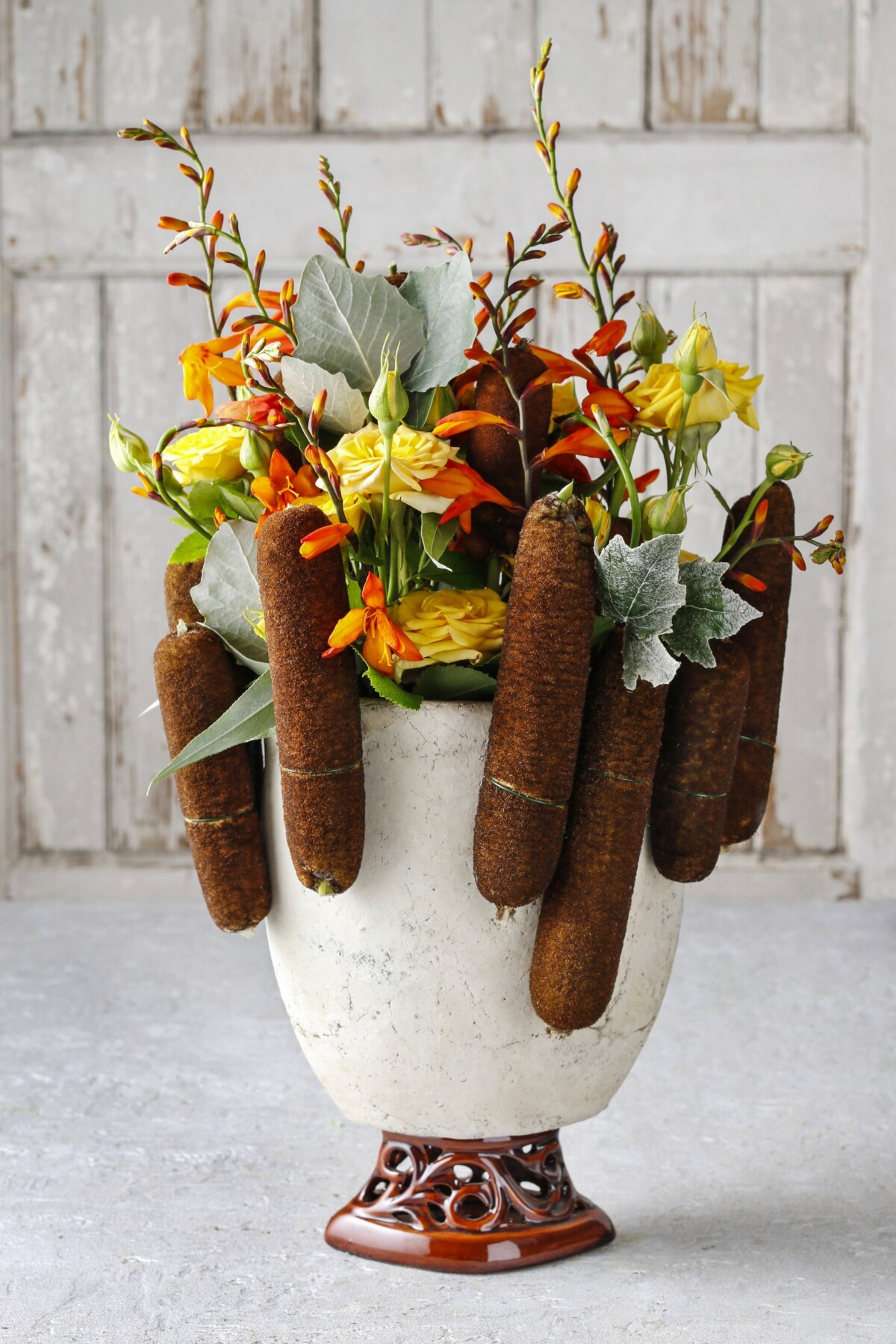
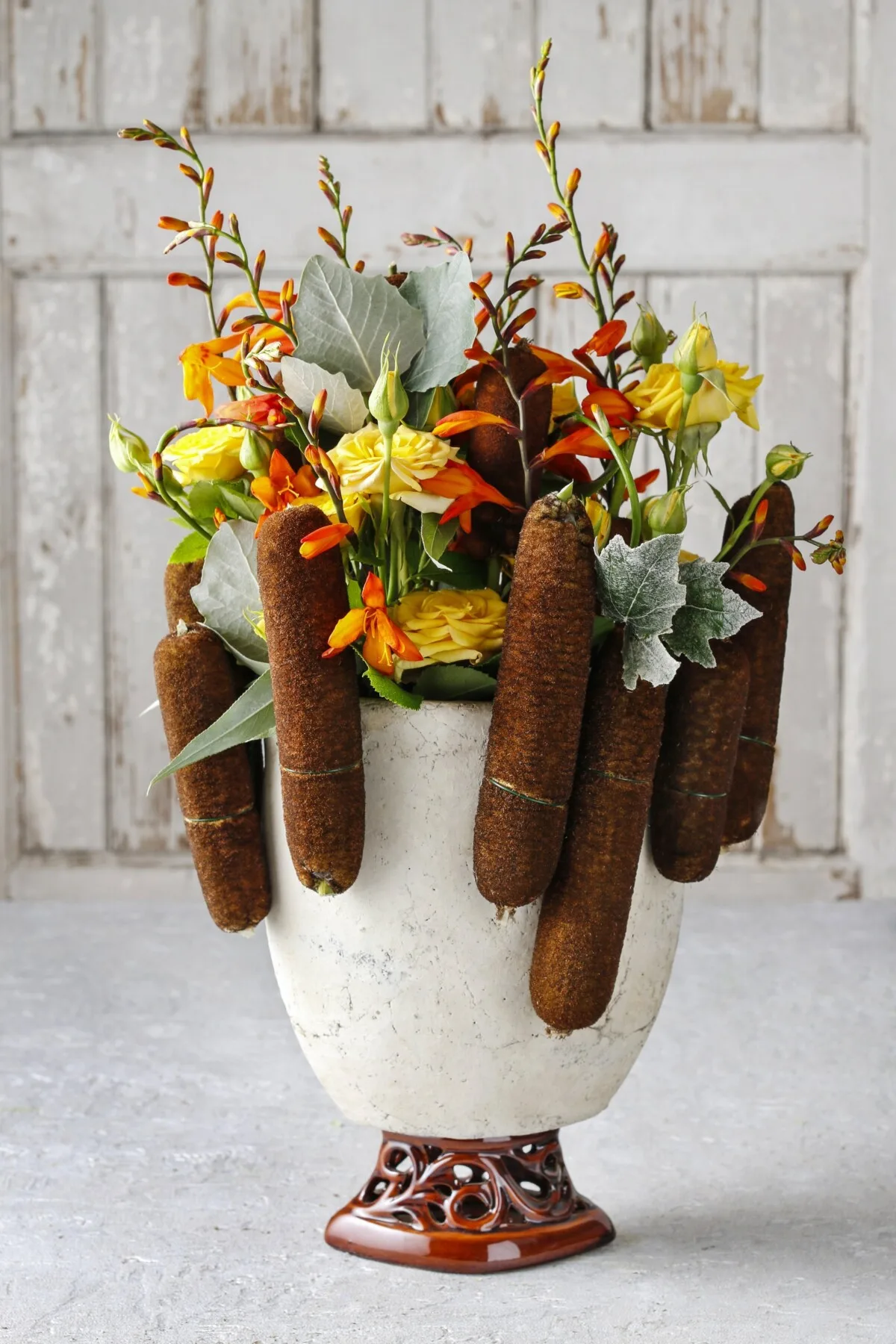
Decide cattails in late summer time, when the brown flowerheads are agency however not but bursting forth with fluff. Collect a dozen or so and cling them as much as dry till the stems are brittle.
Right here’s an instance of 1 cattail association with eucalyptus, bunny tail grass, and sunflowers:
Dried cattails are beautiful in a vase, bouquet, or wreath alongside meadow flowers, birch twigs, chrysanthemums, and decorative grasses.
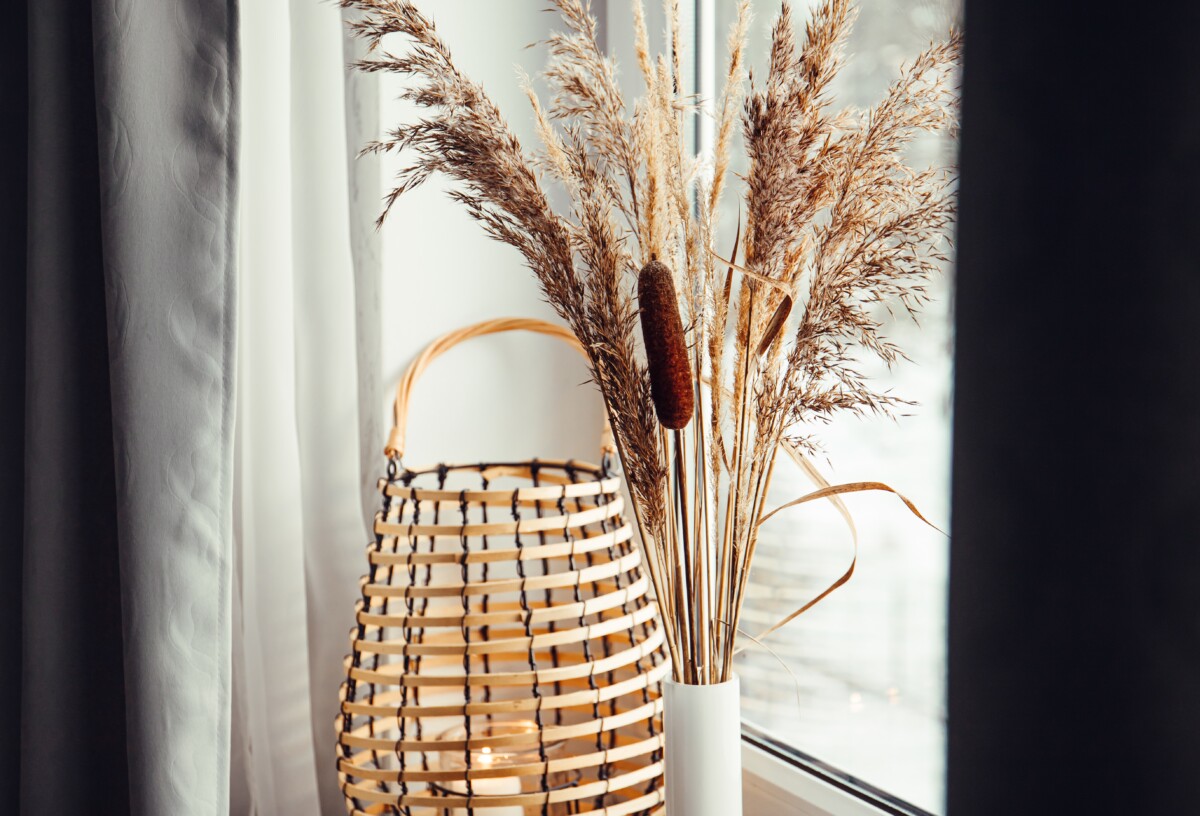
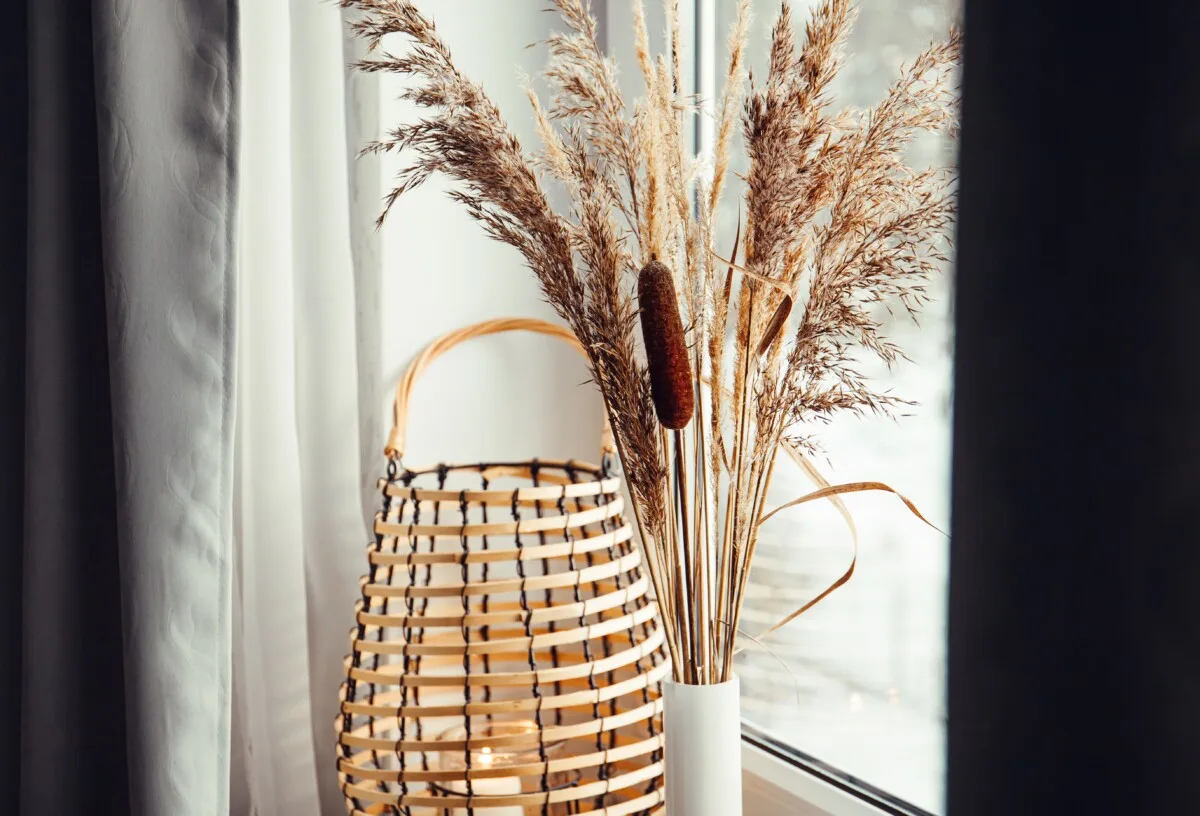
15. Cattail Dolls
With its roots in indigenous cultures, cattail dolls are a plant-based handicraft that creates a three-dimensional sculpture.
All it’s good to begin is a bushel of dried cattail leaves. Right here’s bushcraft legend Mors Kochanski – who popularized this historical artwork type – to stroll us by way of the steps of making the basic cattail doll shape.
With the physique type constructed from cattail leaves, the doll is a clean canvas which may be embellished with different foraged plant supplies. Add hair, instruments, weapons, or wings, for example, to create angels, warriors, archers, wooden cutters, reapers, or hikers. There are a whole lot of variations it will probably take and the cattail doll’s story is yours to think about.

Get the well-known Rural Sprout e-newsletter delivered to your inbox.
Together with Sunday ramblings from our editor, Tracey, in addition to “What’s Up Wednesday” our roundup of what’s in season and new article updates and alerts.
